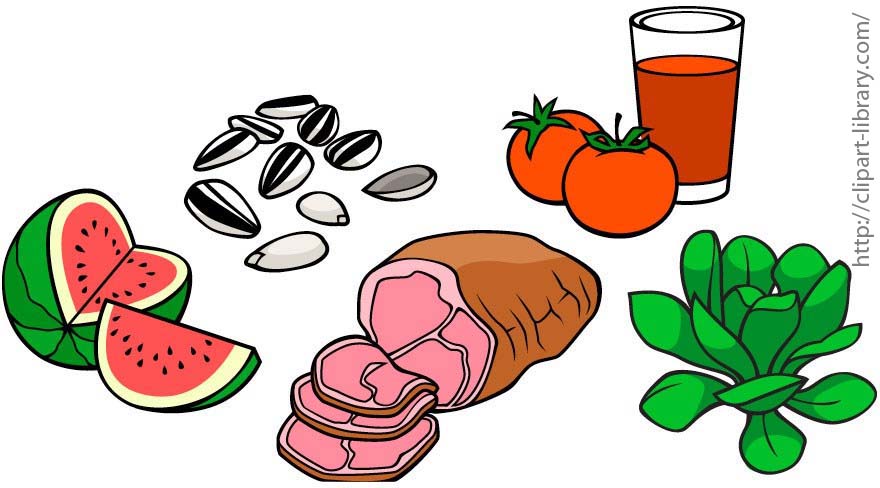The iconic food pyramid – that well-known triangle that guides millions of people in healthy eating – has been replaced by MyPlate.
Unveiled recently by American first lady Michelle Obama, the new guide shows a round plate sliced into four colorful parts.
At a glance, it shows that half the food on your plate should consist of fruits and vegetables. The other half shows grains and protein, with grains in the larger slice. A separate smaller circle to the right says dairy.
What’s missing from this new illustration? Snacks and desserts.
Unlike the old food pyramid, the plate does not suggest portion sizes, only the ratio of the portions.
MyPlate was released by the United States Department of Agriculture as part of its continuing campaign “to promote health, reduce the risk of chronic diseases, and reduce the prevalence of overweight and obesity through improved nutrition and physical activity.”

A USDA statement in January notes that in the U.S., more than one-third of children and more than two-thirds of adults are fat: either overweight or obese. New dietary guidelines released earlier encourage people to eat healthy food such as vegetables, fruits, whole grains, fat-free and low-fat dairy products and seafood. The guidelines also urge people to take in less sodium, saturated and trans fats, sweets and refined grain.
To help people understand the new guide, the U.S. agency also puts forth the following advice:
- Enjoy your food, but eat less.
- Avoid oversized portions.
- Fill half your plate fruits and vegetables.
- Switch to fat-free or low-fat (1 percent) milk.
- When in the supermarket aisles, read the labels on packaged food. Compare sodium in soup, bread and processed meats – and choose the ones with lower numbers.
- Drink water instead of sugary drinks.

Obesity and illnesses
Being fat has been linked to an increasing array of illnesses. These include:
- High blood pressure, hypertension. It is estimated that in the U.S., as much as a third of cases of high blood pressure is linked to obesity. It is twice as common in adults who are obese.
- High blood cholesterol. Half of obese adults are more likely to have high cholesterol levels.
- Diabetes Type 2. Research suggests that nearly 97 percent of Type 2 diabetes in overweight people are a direct result of obesity. Type 2 makes up 90 percent of all diabetes cases.
- Congestive heart failure. Risks are higher for overweight people. The heart muscle weakens and progressively loses the ability to pump blood.
- Heart disease. Risks and incidents of heart attack, congestive heart failure, sudden cardiac death, angina or chest pain, and arrhythmia – abnormal heart rhythm – go up for overweight or obese people.
- Stroke. This is linked to being overweight as well, particularly for people whose fat is in the abdominal area.
- Gallstones and gallbladder disorders.
- Gout. Health practitioners suggest this is primarily a disease of the overweight and obese. The extra body weight puts extra pressure on the kidney, making it unable to push properly uric acid into the urine stream.
- Cancer. The American National Cancer Institute says obesity has been linked to cancers of the breast (postmenopausal), endometrium (uterus lining), colon, kidney and esophagus.
- Complications in pregnancy.
- Poor female reproductive health. Examples include menstrual irregularities, infertility, and irregular ovulation.
- Bladder control problems. Obesity contributes to this problem.
- Mental health and social problems. Studies suggest that fat people are prone to depression, anxiety, lacking in will power, and lower self-esteem. As well, compared to their slimmer counterparts, obese young women are only half as likely to attend college, but more likely to use drugs and alcohol.
While most of these problems beset fat adults, the Mayo Clinic notes that childhood obesity, starts the young ones on a path that leads to adult obesity and the attendant problems.
Food for health
You do not have to go far to find healthy food. Fresh fruits and vegetables, whole grain breads and low-fat dairy items, poultry and fish are all healthful choices easily found in the neighborhood market and grocery store.
For a good variety of nutrition, vitamins and minerals, choose a variety of colors in fruits and vegetables. The more colorful, the better. When choosing carbohydrates, pick whole grains like brown rice, or whole wheat bread, or have your potato with the skin still on.

For meat and fish, choose lean cuts, then broil, boil, braise, grill or steam. Avoid frying. Then enjoy at the dinner table, after removing the skin.
Remember how the food is prepared has a large impact on its health qualities. For instance, steamed carrots is a healthy option. But loading down with lots of salt, bacon bits and melted butter defeats the purpose.
Getting started
The doctor has a lot of say in your overall health. Always check with him or her before embarking on serious lifestyle changes. Most practitioners will agree that slimming down is good, and advise that diet and exercise go together. Yet those who have always led a sedentary lifestyle must ease themselves into a more active mode to avoid complications and setbacks.
Ultimately, preventing obesity leads to a healthier population and lower medical costs. And the good news is that even moderate weight loss leads to improved health and reduces risks of health problems associated with being overweight. — First published in Tulay Fortnightly, Chinese-Filipino Digest 24, nos. 1-2 (June 14-July 4, 2011): 23.
